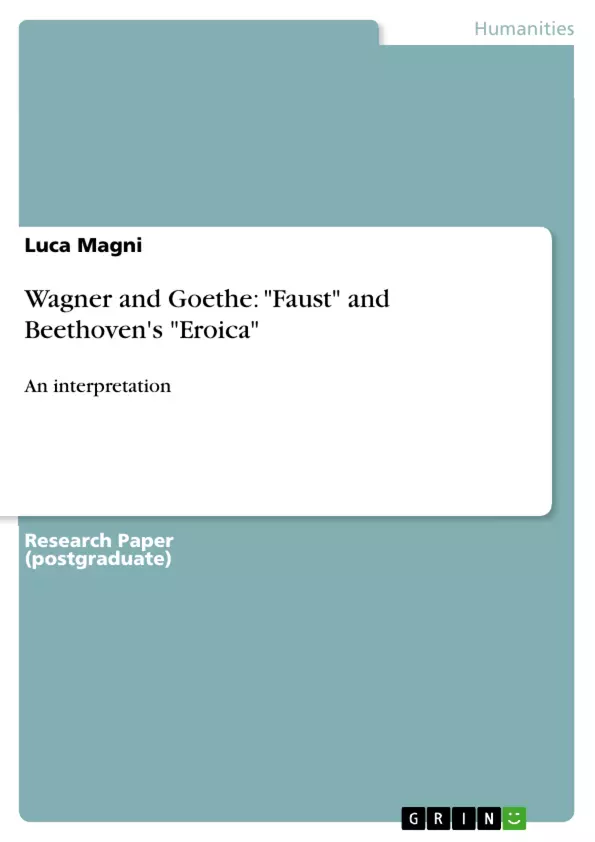This is the English translation, and the widening, of section 1.2 of the first chapter of my Essay “La Metafisica dell'Arte attraverso l'Opera di Richard Wagner”. The original Italian title of this section is “1.2 Wagner e Goethe: Faust e l'Eroica di Beethoven”. This section is here published separately, in a widening version, as were explicit more references and insights related to my interpretation on the relation between Wagner and Beethoven. Bond that in my interpretation is symbolized in the triadic union of Goethe, Wagner and Beethoven. An union which has its extremes in Faust and the Eroica, but its midpoint and maximum expression id the Work of Wagner.
Inhaltsverzeichnis (Table of Contents)
- Introductory note.
- Wagner and Goethe: Faust and Beethoven's Eroica.
- Note of widening.
Zielsetzung und Themenschwerpunkte (Objectives and Key Themes)
This section aims to explore the relationship between Richard Wagner's work and the ideas of Romanticism, particularly in relation to Goethe's Faust and Beethoven's Eroica Symphony. It examines the connection between these three figures, emphasizing the unifying presence of Faust as a central ideal.
- The relationship between Wagner, Goethe, and Beethoven.
- The significance of Faust as a symbol of organicism and the Gesamtkunstwerk.
- The influence of Romanticism on Wagner's work.
- The concept of Totality in the works of Wagner and Goethe.
- The role of nature in the artistic process.
Zusammenfassung der Kapitel (Chapter Summaries)
- Introductory note. This section introduces the text as an English translation and expansion of a section from the author's book "La Metafisica dell'Arte attraverso l'Opera di Richard Wagner." It emphasizes the connection between Wagner, Goethe, and Beethoven, symbolized by the triad of Faust, Wagner, and Beethoven.
- Wagner and Goethe: Faust and Beethoven's Eroica. This section explores the relationship between Wagner and Goethe, highlighting the influence of Goethe's Faust on Wagner's work. The text also examines the link between Wagner's work and Beethoven's Eroica Symphony, suggesting a central role for the concept of organicism in the relationship between these three figures. This connection is further explored through a discussion of Spengler's ideas about the human soul and the themes of nature and love in both Wagner's and Goethe's works.
Schlüsselwörter (Keywords)
The primary keywords and focus topics of the text include Wagner, Goethe, Beethoven, Faust, Eroica Symphony, Romanticism, organicism, Gesamtkunstwerk, Totality, nature, and love. These concepts are explored through a comparative analysis of the works of Wagner, Goethe, and Beethoven, highlighting the influence of Romanticism and the significance of nature in their artistic processes.
- Quote paper
- Dr. Mag. Luca Magni (Author), 2011, Wagner and Goethe: "Faust" and Beethoven's "Eroica", Munich, GRIN Verlag, https://www.grin.com/document/167430



